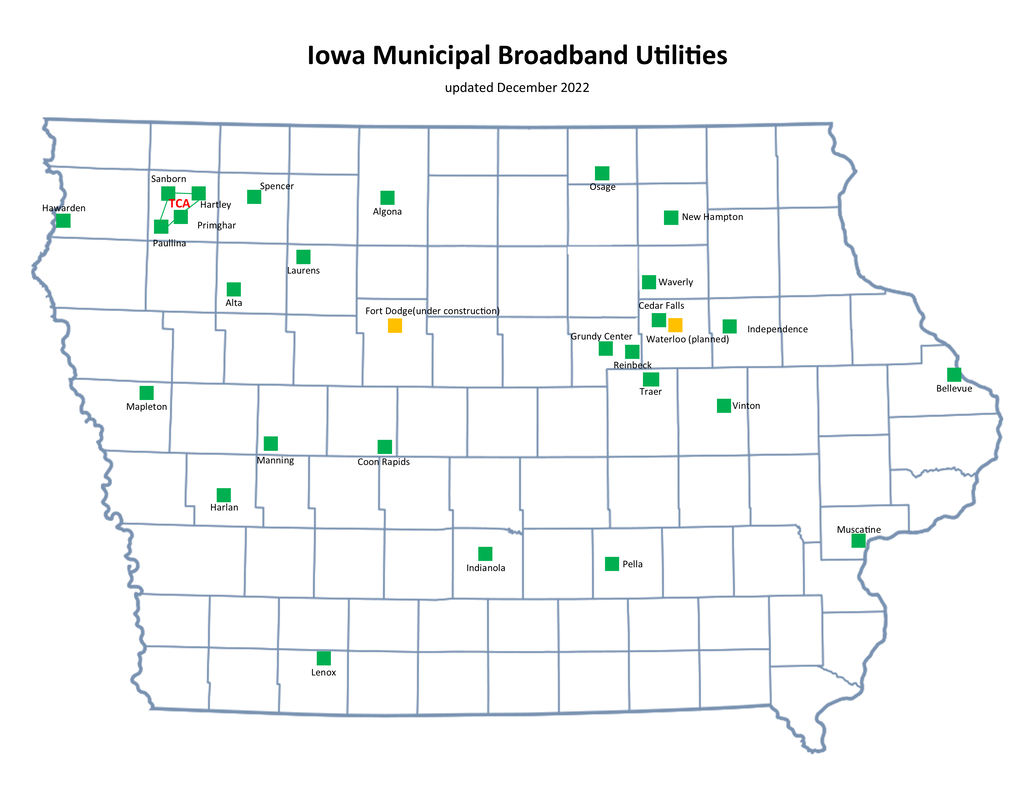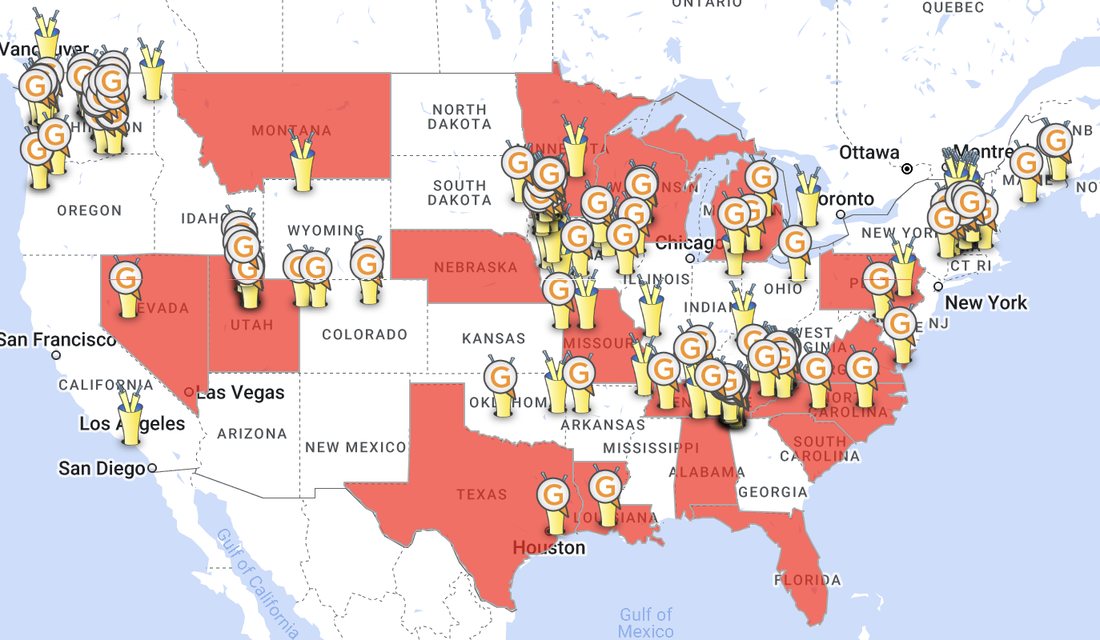Community Broadband Success Stories
Iowa: Leading The Way
|
Since the early 1990's, over two dozen Iowa communities have responded to the needs of their citizens by building and operating community-owned broadband networks, also known as municipal broadband utilities.
These communities vary in size from Primghar (pop. 909) to Cedar Falls (pop. 39,260), with the average population among Iowa municipal broadband communities of just under 6,000. Regardless of size, these Iowa towns share a common commitment to providing fast, reliable, affordable, and universal broadband access to their citizens. They are governed locally, respond to local needs, and employ local citizens. The first generation of municipal networks in Iowa were hybrid fiber-coaxial (HFC) networks that used a fiber backbone but used copper wire for the final few hundred feet. However, these first generation networks are being upgraded to fiber-to-the-home as these communities realize the need for future-proof fiber technology to keep up with citizens' growing demands. |
The National Trend
|
The Institute for Local Self Reliance, which closely tracks community broadband developments across the nation, reports the following statistics:
|
Why Are Community Broadband Networks Popular?
|
|
The number of community broadband networks across the nation is growing in large part because local citizens demand that their communities have access to the best broadband services possible. Building a new broadband network today means building it using fiber optics, not copper wires. Fiber optics cables last decades with less maintenance and higher reliability than any other network technology.
Fiber optics is the future. And it is unlikely that incumbent providers will upgrade their networks to all fiber for a long time. So to bring the advantages that fiber offers, communities are choosing to do it themselves. |
Documents
Becoming Broadband Ready Toolkit, NextCentury Cities, 2019
Broadband is Affordable Infrastructure, Institute for Local Self-Reliance, Spring 2019
The Next Generation Network Connectivity Handbook, GigU: The Next Generation Network Innovation Project, July 2015
Building The Gigabit City, Craig J. Settles, 2013
Community Broadband Development Process, Blandin Foundation
Fiber To The Home Primer, FTTH Council and Broadband Communities Magazine, Fall 2015
Broadband is Affordable Infrastructure, Institute for Local Self-Reliance, Spring 2019
The Next Generation Network Connectivity Handbook, GigU: The Next Generation Network Innovation Project, July 2015
Building The Gigabit City, Craig J. Settles, 2013
Community Broadband Development Process, Blandin Foundation
Fiber To The Home Primer, FTTH Council and Broadband Communities Magazine, Fall 2015
Additional Online Resources
Community Broadband Action Network. www.broadbandaction.com
Institute for Local Self Reliance. www.muninetworks.org
CLIC-Coalition for Local Internet Choice. www.localnetchoice.org
Fiber Broadband Association. www.fiberbroadband.org
Broadband Communities Magazine. www.bbcmag.com
Next Century Cities. https://nextcenturycities.org/
Institute for Local Self Reliance. www.muninetworks.org
CLIC-Coalition for Local Internet Choice. www.localnetchoice.org
Fiber Broadband Association. www.fiberbroadband.org
Broadband Communities Magazine. www.bbcmag.com
Next Century Cities. https://nextcenturycities.org/



